They may be 25 years old, but the Class 319s entering traffic as ‘new’ trains in the North West are nevertheless proving popular.
The four-car electric multiple units have been described, variously, as “cast-offs” and “unwanted”. There have been cries that the South East has benefited from new trains, while the North is left to make do with its leftovers.
But those who operate and use the ‘319s’ in the North, and those who are waiting to use them, do not seem to be giving that impression.
The first train ran on March 5 (RAIL 770). Operated by Northern Rail, they currently run only between Liverpool Lime Street and Manchester Airport, with hourly departures for most of the day from each starting point.
Two Class 319/3s are used, although for a period during the middle of the day, one of the ‘319s’ is stabled at Lime Street to act (effectively) as a rescue unit in case of failures. The first train was the 0616 Liverpool Lime Street-Manchester Airport, formed of 319363.
Northern Rail Managing Director Alex Hynes said on luanch day: “This is an exciting time for our customers in the North West. Being able to deliver these electric services to them is the culmination of years of planning and will mean more seats, more space and improved journeys for our customers.”
Hynes tweeted on that first day: “Thanks to hard work of @northernrailorg team we will provide millions more seats this year, as our fleet grows by 10%, starting today.”
Also on March 5, Network Rail Route Managing Director Martin Frobisher said: “This first electric train to travel between Liverpool Lime Street and Manchester Airport signifies the completion of the latest stage of a much bigger electrification programme in the North West.
“When the North West electrification upgrades and network improvements are completed in 2019, they will deliver significant, long-term benefits to passengers across the north of England.”
The trains form the first part of the NW Electrification programme that, when complete, will transform services in the region.
Gone will be two-car, cramped diesel multiple units on lines starved of major investment. Instead four-car EMUs will glide in and out of stations on their way to various destinations.
Eventually the trans-Pennine routes will also be wired, and it is hoped that perhaps the entire northern railway network will be electrified (RAIL 770). While that remains a long-term ambition, the immediate hopes are to get the ‘Northern Electrics’ brand performing, to have sufficient ‘319s’ available, and to ensure that the next stage of EMU running can begin (as hoped) in May. It is a busy time.
At Manchester Rail Operating Centre (ROC), Northern Rail’s Control Operations Manager Adrian Bedford is watching over the region. His job, in effect, is to keep the trains running.
The ROC opened in July 2014. It is adjacent to Ashburys station, and houses Network Rail, Northern Rail and First TransPennine Express staff who work together when there is disruption. They are in the same room, with each company using an island of desks. Northern has 23 staff based here, plus a further five maintenance staff members who provide technical support to train crew.
Bedford explains how members of his team look after specific geographic areas of the region - for example, one looks after Manchester while another is dedicated to Manchester South. There is also someone dedicated to the Class 319s, the only class-specified role.
“We have so many Metro trains that we need one to look after the Liverpool and Wigan area,” says Bedford. “It is a different operation, and it also looks after Allerton operations .”
He adds that certain nuances also have to be considered with the ‘319s’: “Lime Street is short for platform length. We need to be careful for maintenance, too.”
Bedford explains that the reason a ‘319’ waits at Lime Street during the day, rather than heading to Allerton, is because the Merseyside depot has its overhead line equipment (OLE) isolated during the day.
It can be switched on (and in time it will be), but at the moment that process takes 90 minutes. This means that by the time a ‘319’ can come off depot, the train (in theory) would have lost a complete journey between the two North West cities.
It also helps Northern for the time being, as Bedford acknowledges: “We know where the other ‘319’ is at the moment.”
He explains the driving arrangements. The ‘319s’ run across the Chat Moss line. Manchester Piccadilly drivers sign the route to Deansgate, with Liverpool Lime Street drivers signing it across to Merseyside.
“We have the perfect recovery plan. We know there is a set at Lime Street, so we know we can rescue one. It is dead easy in theory.” He adds that in the Manchester area, a Northern Class 323 could be deployed to rescue a failed ‘319’ if necessary.
Bedford highlights that for the moment, the contingency has actually been reduced because crossovers on the Liverpool-Manchester phase of electrification have not yet been wired.
He tells RAIL: “At the moment it is not wired, so the set is parked at Lime Street. There is a contingency, but it is not what it was. Touch wood - the ‘319s’ are good, they don’t fail. They are not complicated - the bits and bobs are not too much different to the ‘321s’ and ‘322s’ that we have, so there is experience within my team.”
On March 17 (the day of RAIL’s visit to Manchester ROC), there were four Class 319s available. There was also one at Preston for driver training to Carnforth, one for Liverpool-Crewe training, and one static training at Stockport. The trips to Carnforth are for crew training - the ‘319s’ will not run there in service.
“The next part of the project is passengers between Liverpool and Wigan in May. Route proving will be done at night,” says Bedford.
Northern will need eight trains at that point. Currently the route uses two DMUs that rotate. Bedford thinks that will be the case for the ‘319s’, but admits he has not seen the full details. He adds that pairs of Class 319s can run on the current electrified route, but that this would mean limited stops because of platform lengths.
The ‘319s’ will also prove their worth in May, when Liverpool hosts the ‘Three Queens’ event. As part of the Mersey River Festival, Cunard’s Three Queens - the Queen Elizabeth, Queen Victoria and Queen Mary 2 - will visit the city to mark the 175th anniversary of the cruise line. The event is expected to bring up to a million people to the city, and Bedford enthuses: “To have a big train to take people is such a great solution.”
The EMUs have created a buzz among passengers, he says.
“We encourage interaction. When we launched them, people helped. We had hashtags ready on Twitter. Some passengers have said they have changed their lives.
“People didn’t know they were being introduced. They ask: why is it coming? When are there more? It is like a constant ‘coming soon’.
“It is interesting to watch the buzz. They are generating interest - people want to know. If you used to travel on a ‘142’ and you now have an electric, then they are new. I went to Brighton for a football game and used a ‘319’. It was horrible, but now it is like a transformation of the set.”
Bedford looks back to when the franchise started ten years ago: “It’s changed. The fleet has grown - loads of ‘158s’ and more ‘142s’ now, and electrics, too. The ‘319s’ are the next step. It is exciting.”
However, he warns of more hardship ahead for passengers, with weekend closures to enable the re-boring and digging out of Farnworth Tunnel (RAIL 768).
“That is one of the biggest things we will do as a company. The challenge is tangible services. The end of the work is sensational, but there’s hardship. It’s so complicated for Farnworth.”
John Lowe is a Conductor Manager for Northern Rail. He says of the ‘319s’: “The conductors love them, they are amazed.”
He admits that at first some were unsure of the trains, but that if they are still unsure after their initial training, then they will be accompanied on a journey. He says that Liverpool’s conductors have completed their training (that’s 69 staff, with a further three to be trained as they are currently off work on long-term sick leave).
Training takes one day. Wigan-based conductors are currently learning the trains, with that training taking place while they are in traffic. They travel on the Liverpool-Manchester trains to learn how the ‘319s’ work.
Says Lowe: “The role of conductor doesn’t differ. One of the biggest things is that we’re not leaving passengers at stations. Whether trains were strengthened or not, that used to be the case. Our business is happier passengers, and everything is positive.”
The introduction of the ‘319s’ has created not only happier passengers, but also happier staff. Says Lowe: “If you start the day off with grumpy passengers then it affects the day. The conductor’s morale has gone up. No conductor wants to leave passengers on stations.”
When the EMUs started work in early March, there was a spike in passenger numbers. Two weeks later, those figures had been sustained.
Says Lowe: “I know passengers at Wavertree. They were travelling into Lime Street to get TPE trains, but they don’t now - they use the EMU. More and more people are altering their travel time.
“The 0716 from Lime Street is very busy. Previously we’ve had to leave people from St Helens, but now we have more people and space. We have not had reports of overcrowding.”
Lowe says the extra capacity afforded by the four-car EMUs will be “even better for Wigan and Manchester Victoria lines” when they are introduced next month.
“The passengers are very positive. The cleanliness is a big thing. We have good cleaning time and on-train cleaning, too. It is a psychological thing - if the train is shoddy then people will drop litter. The passengers can also see out of the windows now - that’s new! The ‘319s’ look clean and smart.”
There has clearly been a psychological effect: “The ‘319s’ have perked people up. It shows it is not a lost cause here. We are making people happy with two trains, so what will they be like when there are more?
“Conductors like working the Pacers as they can see everything in the train. But obviously they are chomping at the bit for more electrics. They know the process, so we are looking forward to putting more in service.
“Another thing is that passengers are talking more to conductors. We had disruption last week, but people were getting information.”
Lowe admits that the current lack of Class 319s in use on Saturdays is frustrating, but says of the overall passenger experience: “You remember the bad journeys. You always report the bad one. But people now do tweet happy stuff. I am starting to see more of that.
“I don’t use Twitter and Facebook, because I am too old, but my son follows Northern on there and he’s commented that it is a lot more positive. You never used to see that. We never had a slap on the back - it was dross, fighting fires. But it is positive now.
“And the positive feedback is not just the ‘319s’. The general public won’t know the difference. Last week was the first full week of the EMUs and I have never had so much passenger feedback for Northern. It’s great. We are talking 200/300 comments. It makes you feel better, and it’s good to give feedback. I cannot speak for all, but I am quick to jump when there is negative, but I also am when it is positive.”
Passenger behaviour has also changed, he says: “I notice as well that people are now spreading along the platforms to get on. There’s new behaviour. It means dwell times are better, and it creates a better atmosphere.
“I dealt with the ‘180s’. They were five coaches, but it wasn’t as positive. The seating capacity in the ’180s’ was not as good, and there was declassified First Class. The ‘319s’ are quieter, too. People have to talk louder on a DMU, but not on an EMU.”
At Manchester Piccadilly’s Platform 14, the 1355 to Liverpool Lime Street is due. It is formed of 319363, one of the refreshed sets in traffic. Northern Rail Operations Manager Liam Wallis is waiting to join the train, beaming with pride at the EMUs.
“This is bliss,” he says as the ‘319’ leaves. “To get this working has been hard. But the staff have been buying into it. The initial plan moved a few times. The EMUs starting got knocked back, but we are on board now.”
He says decisions are still being made regarding the next tranche of services: “Will it be a Wigan stopper or the expresses? The decision will be determined on the number of units, and the number of crews trained. I need 40 drivers at Wigan - I need to train staff. That is the reason there could be a delay, but it won’t be an issue.”
Wallis harks back to Bedford’s comments about the specific needs for the ‘319s’. “There is a real specific train for Lime Street. You must be six feet from the buffers, and then the next ‘319’ must be six feet away from that train.” He says that this will become easier when Lime Street’s platforms are lengthened.
“I am feeling pride. There is so much work that people have put in - it’s just huge.
“This is a small piece of the jigsaw. It starts with this branching from Lime Street. Lime Street is the hub. The long-term aspiration is that there are new things you can do. The routes are easy to learn compared to competency. The options ‘319s’ give us… we can operate longer trains, and trains on longer services.”
Northern Rail Performance Improvement Manager Peter Gerring is also on board. He says: “People would rather travel by taxi at times. It is £60 each way from Southport to Manchester Airport. It is £25 return by train!
“Northern was a 0% growth franchise and look now! I caught the 0621 from Southport, and by Burscough there’s 100 people. It is full and standing. To me, with the Invitation To Tender, it is about thinking differently. We are moving people around. It is getting people onto rail.
“Wigan to Manchester is great, it is thinking about the whole industry. How do we make that work? We have stoppers, but Victoria trains run to Lime Street in 35 minutes. It is a no-brainer.
“Currently steam times are comparable to now. EMUs offer much better options.”
- This feature was published in RAIL 772 on Aprli 15 2015

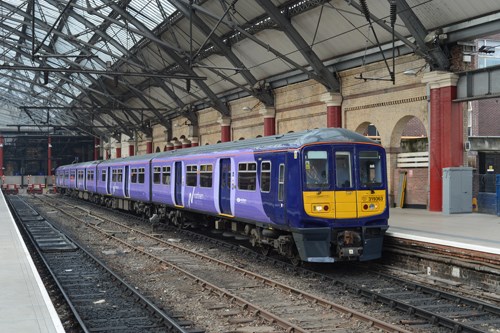
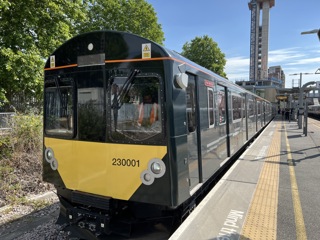
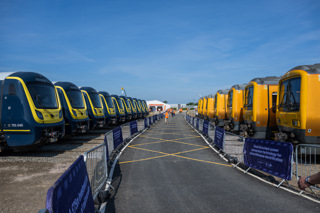
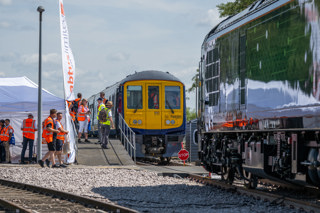
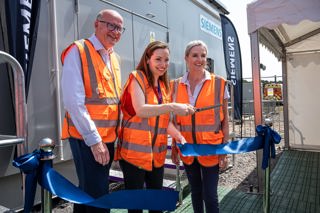
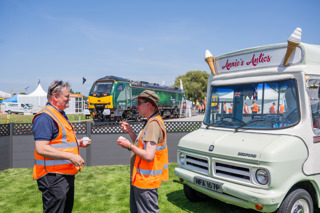











Duncan Bhaltair Wilson - 27/09/2015 12:33
Why is this article in "New Train". That is a barefaced lie. These 319's are not new in any way, shape, or form. They are cascaded train that are no longer seen as fit for use in London and as usual the north has received London' hand me downs.